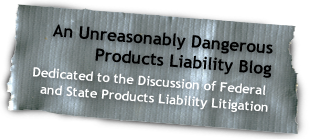Exchanging The Machete for a Copyright: The New Friday the 13th Lawsuit
Like their antagonists, the slasher films of the 1980’s never die. By our count, there have been eleven renditions of Friday the 13th, ten of Halloween, and eight of Nightmare of Elm Street. Add in the Freddy v. Jason cross-over and that is a whole lot of slasher gore. Good or bad, they just keep coming back as if nothing can stand in their way. Not bad reviews. Not transporting the evil 445 years into the future. And not even silly Rob Zombie remakes. It seems like nothing can stop them. Up until this point, however, Freddy, Jason Voorhees, and Michael Myers have never stared into the face of a copyright lawsuit.
According to a report from The Hollywood Reporter, a lawsuit has been filed in Connecticut questioning who has the rights to license new film versions of Friday the 13th. Here’s the story: Victor Miller wrote the script for the original film back in 1979 and created the characters in some of the sequels. According to the complaint, Miller wrote the script as a “work-for-hire” employee of the Manning Company at the request of Sean Cunningham, its general partner. Thereafter, Georgetown Productions financed the production of the film in exchange for an assignment of the Manny Company’s rights to the screenplay, including any and all copyrights therein. Now, some 36 years later, Miller is attempting to terminate the grant of rights and reclaim ownership.
To hedge off Miller’s attempts, Plaintiffs Horror, Inc., a successor entity of Georgetown, and the Manny Company, filed suit against Miller, alleging that because the screenplay was written as a “work for hire,” he does not have the right to terminate Horror’s copyright interests under Section 203(a) of the United States Copyright Act. In addition to seeking a declaration of the parties’ respective rights, Horror and the Manny Company seek a determination that Miller has materially breached the Employment Agreement, slandered Horror’s title in “Friday the 13th”, and engaged in unfair trade practices.
We here at Abnormal Use find this suit intriguing, not because of the legal copyright issues, but because of the history behind the making of the Friday the 13th franchise. Miller and Cunningham began working together in 1976. Prior to Friday the 13th, Miller wrote and Cunningham produced family friendly classics such as Here Come the Tigers and Manny’s Orphans. We understand if you have never heard of them. Miller and Cunningham got into the horror genre only after witnessing the huge success of Halloween in 1979. Wanting to capitalize on that success, Cunningham asked Miller to write what is essentially a copycat film placed in a different setting (the stories of Jason Voorhees and Michael Myers took much different paths in the sequels). While we do not know who reaped the most benefits, we assume they both earned a nice check over the years. With this background, we find it silly that Miller and Cunningham are now wanting to fight over the rights to this “novel” idea all of these years later.
Regardless of the outcome, we have not seen the last of Jason Voorhees. A little copyright dispute is nothing for Camp Crystal Lake’s indestructible, machete-wielding mass murderer.















